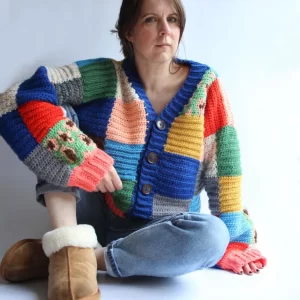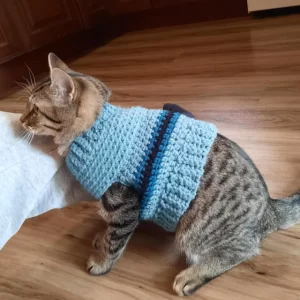Crocheting a baby blanket is a thoughtful and heartwarming gift for an expecting parent. It’s a beautiful way to welcome a newborn into the world with something soft, cuddly, and handmade with love. But before you dive into a basket of yarn and hooks, you might be wondering: just how long will this project take?
The truth is, there’s no one-size-fits-all answer to this question. The time it takes to crochet a baby blanket depends on a number of factors. Let’s break down these factors and explore how they influence the overall crocheting time.
Skill Level: Beginner, Intermediate, or Advanced?
Your experience level as a crocheter is a major time influencer. Beginners will naturally take longer than seasoned crocheters. This is because beginners are still familiarizing themselves with basic stitches, tension control, and pattern reading. On the other hand, experienced crocheters can work faster due to their proficiency and ability to tackle more intricate stitches or complex patterns.
The Chosen Stitch: Simple or Showstopper?
The type of stitch you choose will significantly impact the crocheting time. Simple stitches, like single crochet or double crochet, work up quickly and require less focus on counting or following intricate patterns. This makes them ideal for beginners and quicker projects. Conversely, intricate stitches or textured patterns, while visually stunning, involve more steps and concentration, leading to a longer completion time.

Blanket Size: Snuggle Wrap or Crib Cover?
The size of the blanket directly affects the total number of stitches you’ll need to make. A small security blanket will require far fewer stitches compared to a larger crib blanket. While a smaller blanket might be completed in a weekend, a larger one could take several weeks, depending on the other factors mentioned above.
Yarn Weight and Hook Size: Bulky or Delicate?
The weight of your yarn and the size of your crochet hook are interconnected. Bulky yarn, often used for quick projects, works up faster with a larger hook. This means fewer stitches are needed to create the same amount of fabric compared to using a thinner yarn and smaller hook. However, bulky yarn might not be suitable for achieving delicate details or intricate patterns.
Crocheting Speed: Speedy Stitcher or Leisurely Looper?
We all crochet at our own pace. Some crocheters can fly through rows with lightning speed, while others prefer a more relaxed approach. This personal speed, of course, influences the overall project time. However, don’t feel pressured to crochet faster! Enjoy the process, and celebrate each completed row.

Additional Considerations: Edgings, Borders, and Embellishments
While not essential, adding decorative elements like edgings, borders, or appliques can extend the crocheting time. These details, though beautiful, involve extra rows and potentially new techniques to learn. Consider the final look you desire and factor in the additional time these embellishments might require.
Planning Makes Perfect: Swatching and Time Estimates
Before diving headfirst into your project, take some time to plan. Make a swatch using your chosen yarn and hook size. This swatch helps you determine your stitch gauge, which is essentially how many stitches and rows create a specific area of fabric. Knowing your gauge allows you to estimate the total number of stitches needed for your desired blanket size.
With your stitch gauge in hand, you can then search for patterns that offer project time estimates. Many crochet pattern designers will provide a range based on their own crocheting speed and the blanket size. Remember, these estimates are a starting point, and your actual time might vary.
Embrace the Journey: The Joy of Crafting
While the time it takes to crochet a baby blanket is important, remember to focus on the joy of creating something special. Crocheting is a relaxing and therapeutic activity. It allows you to express your creativity and personalize the blanket with colors, textures, or even custom appliques. Take breaks when needed, savor the process, and celebrate each completed row.

Tips for Faster Crocheting (Without Sacrificing Quality):
- Minimize distractions: Find a quiet space to crochet where you can focus on your project.
- Organize your supplies: Having everything you need within reach can save valuable time.
- Practice good tension: Consistent tension creates a neat and even fabric, reducing the need to redo rows.
- Use stitch markers: These simple tools help you keep track of your pattern, especially for repetitive sections.
- Weave in ends as you go: This prevents a pile-up of ends to weave in later, saving time at the project’s completion.
Crocheting a baby blanket is a rewarding experience. With careful planning, consideration of the factors mentioned above, and a touch of patience, you can create a beautiful and cherished gift in a timeframe.
Finding the Perfect Project: A Guide for Different Timeframes
Now that you have a better understanding of the factors influencing crocheting time, let’s explore some project recommendations based on your timeframe:
-
Quick Gifts (3-6 Hours): If you’re short on time, there are plenty of speedy baby blanket patterns available. Look for patterns that use bulky yarn, large hooks, and simple stitches like single crochet or double crochet. These work up quickly and create a cozy blanket perfect for snuggling.
-
Weekend Wonders (10-20 Hours): With a little more time to dedicate, you can explore a wider variety of patterns. Consider projects that incorporate basic stitch variations like half double crochet or treble crochet for added texture. These blankets might include stripes, color changes, or simple bobble stitch patterns, adding visual interest without significantly extending the crocheting time.
-
Gifting with Time (20-40 Hours): If you have the luxury of a few weeks, you can delve into more intricate patterns with beautiful stitch combinations or textured details. Explore cable stitch patterns, granny squares, or textured single crochet variations. These blankets take longer but create stunning heirlooms that will be treasured for years to come.
Beyond the Blanket: Project Ideas for Different Skill Levels
The beauty of crocheting is its versatility. While baby blankets are a popular choice, there are many other adorable projects you can create for a new arrival:
-
Amigurumi Love: Amigurumi are small, crocheted stuffed animals that make perfect cuddle companions for little ones. Look for beginner-friendly patterns using simple shapes and minimal embroidery details.
-
Lovey Security: A lovey is a small, soft blanket with a cuddly attached object like a stuffed animal head or a simple fabric square. These provide comfort and security to babies, and beginner-friendly patterns are readily available.
-
Warm Hats and Booties: Crocheted hats and booties are practical and adorable ways to keep a baby warm. Look for patterns that use soft, breathable yarn suitable for delicate newborn skin.
Remember, It’s a Journey, Not a Race
Regardless of the project you choose, the most important thing is to enjoy the process. Embrace the meditative rhythm of crocheting, celebrate your progress, and don’t be afraid to experiment. There’s a learning curve with any new skill, and mistakes are inevitable. But with each project, you’ll gain experience and improve your technique.
The Gift of Time and Love
A crocheted baby blanket, or any handmade item for that matter, transcends its physical form. It represents the time, love, and care you’ve poured into its creation. It’s a tangible expression of your well wishes for the new arrival and a gift that will likely be cherished for years to come. So, grab your yarn and hook, find a comfortable spot, and let the joy of creating unfold!


